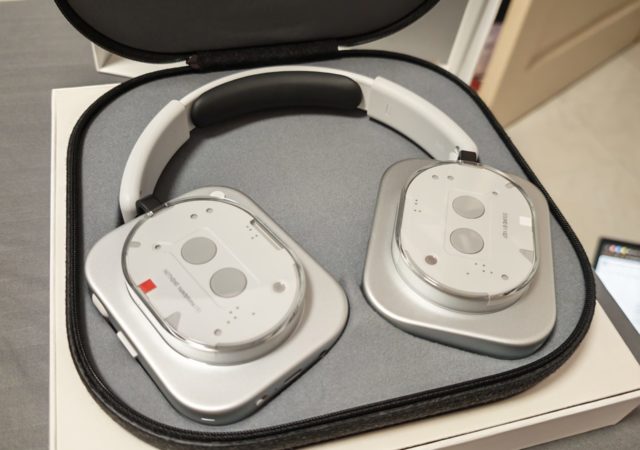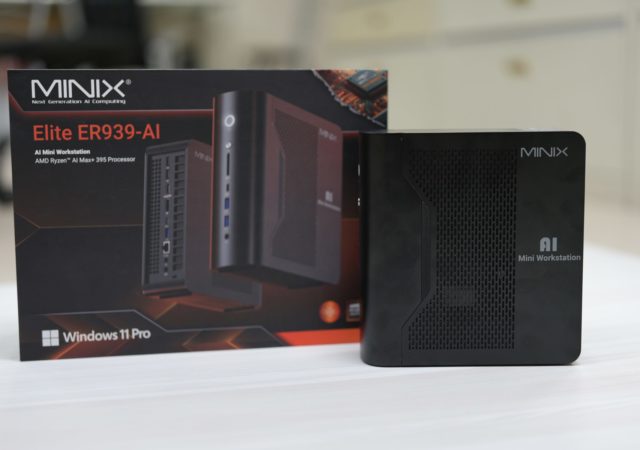How
Agile Technology Could be the Key to Manufacturing Prosperity
Agile Technology Could be the Key to Manufacturing Prosperity
Frank McLoughlin, Vice
President – Business Solutions Group, Epicor International at Epicor Software
President – Business Solutions Group, Epicor International at Epicor Software
With rising competition from developing low cost
manufacturers in the Mekong region due to low labour and operating costs[1], established manufacturers
in Southeast Asia (SEA) are facing strong competition. The demand for quality,
as well as the need to provide a stronger value proposition, is driving a
greater focus on technology in the manufacturing sector, as companies face
pressure to become more efficient and productive.
manufacturers in the Mekong region due to low labour and operating costs[1], established manufacturers
in Southeast Asia (SEA) are facing strong competition. The demand for quality,
as well as the need to provide a stronger value proposition, is driving a
greater focus on technology in the manufacturing sector, as companies face
pressure to become more efficient and productive.
Technology is continuing to take an ever-more integral role
in the SEA manufacturing landscape. Beyond enabling greater efficiency and
innovation, automation and robotics will greatly reduce labour costs, and
enable employees to upskill and focus on more value-added tasks–all of which
are critical in ensuring the long-term sustainability of the industry, as well as
solving the persistent problem of attracting and retaining talent, particularly
millennials.
in the SEA manufacturing landscape. Beyond enabling greater efficiency and
innovation, automation and robotics will greatly reduce labour costs, and
enable employees to upskill and focus on more value-added tasks–all of which
are critical in ensuring the long-term sustainability of the industry, as well as
solving the persistent problem of attracting and retaining talent, particularly
millennials.
This is also something we see happening to our western
counterparts who have needed to implement technology just to survive. The same
trend is now prevalent in SEA.
counterparts who have needed to implement technology just to survive. The same
trend is now prevalent in SEA.
Whether it’s upgrading to a newer version of an existing
ERP (enterprise resource planning) solution or investing in new systems, technology
can help ensure manufacturers are in the best position to respond to challenges
with agile manufacturing processes and continue company growth.
ERP (enterprise resource planning) solution or investing in new systems, technology
can help ensure manufacturers are in the best position to respond to challenges
with agile manufacturing processes and continue company growth.
Smart factories
Simply put, smart factories are the computerisation of
manufacturing—machines that are technologically advanced enough to communicate
with each other, monitor physical processes, and make decisions. There are many
benefits to creating a ‘smart’ manufacturing environment including, greater
productivity, having more detailed product specifications, and the increased potential
to reach a wider customer base.
manufacturing—machines that are technologically advanced enough to communicate
with each other, monitor physical processes, and make decisions. There are many
benefits to creating a ‘smart’ manufacturing environment including, greater
productivity, having more detailed product specifications, and the increased potential
to reach a wider customer base.
With a vision to develop Singapore as the leading hub in
advanced manufacturing and technology, British engine giant Rolls-Royce and
Singapore’s Agency for Science, Technology and Research (A*Star) are teaming up[2] to develop digital and
data analytics capabilities for various industries, focusing on smart
manufacturing and the Internet of Things (IoT).
advanced manufacturing and technology, British engine giant Rolls-Royce and
Singapore’s Agency for Science, Technology and Research (A*Star) are teaming up[2] to develop digital and
data analytics capabilities for various industries, focusing on smart
manufacturing and the Internet of Things (IoT).
The proposed centres will include a laboratory aimed at
developing IoT sensors by using advances in nanotechnology and
microelectronics, and a computational science development laboratory that can
help create solutions to make use of the sensors, such as analytics software,
applications design and cyber security.
developing IoT sensors by using advances in nanotechnology and
microelectronics, and a computational science development laboratory that can
help create solutions to make use of the sensors, such as analytics software,
applications design and cyber security.
The centres will also develop future-of-manufacturing
capabilities, including advanced technologies and processes for manufacturing,
assembly and maintenance, repair and overhaul applications.
capabilities, including advanced technologies and processes for manufacturing,
assembly and maintenance, repair and overhaul applications.
However, to take full advantage of these ‘smart
environments’ it is essential that manufacturers use technologically advanced
ERP systems that can support this kind of machine interaction and extract
relevant necessary data. Entire smart factories may still be some time off, but
the manufacturing industry is starting to realise that creating smart
production processes is the key to cutting costs and increasing efficiency.
environments’ it is essential that manufacturers use technologically advanced
ERP systems that can support this kind of machine interaction and extract
relevant necessary data. Entire smart factories may still be some time off, but
the manufacturing industry is starting to realise that creating smart
production processes is the key to cutting costs and increasing efficiency.
Cloud
Increasingly, manufacturers are considering running their ERP
systems in the cloud, a way of working which brings many advantages. It can be
a more cost efficient means of hosting your ERP solution and offer scalability
that can be responsive to what your business requirements are at a specific point
in time. Also, IT responsibilities can be alleviated by outsourcing many of the
associated tasks to the ERP cloud provider and, in many cases, upgrades to the
technology are more easily installed with less disruption to staff. At the same
time, migration from on-premises systems to the cloud is simple. As the same
application is used in both deployment options, cost and risk are significantly
reduced, and the migration is complete in a much shorter timeframe.
systems in the cloud, a way of working which brings many advantages. It can be
a more cost efficient means of hosting your ERP solution and offer scalability
that can be responsive to what your business requirements are at a specific point
in time. Also, IT responsibilities can be alleviated by outsourcing many of the
associated tasks to the ERP cloud provider and, in many cases, upgrades to the
technology are more easily installed with less disruption to staff. At the same
time, migration from on-premises systems to the cloud is simple. As the same
application is used in both deployment options, cost and risk are significantly
reduced, and the migration is complete in a much shorter timeframe.
Currently, not many manufacturers in Singapore or SEA are
taking advantage of the cloud. This is set to change however, as manufacturing
processes become more sophisticated, the technology demands company-wide usage
for the best results, and a greater level of data storage becomes a requirement.
taking advantage of the cloud. This is set to change however, as manufacturing
processes become more sophisticated, the technology demands company-wide usage
for the best results, and a greater level of data storage becomes a requirement.
Internet of Things
With the increasing proliferation of connected devices, IoT
has continued its growth and industry penetration. The IoT revolution is
expected to create tremendous business opportunities by 2022, especially in the
industrial automation market. This translates to a value of US$3.88 trillion
linked to manufacturing, according to Industrial-IP.org. With this growth comes
challenges around effective data management, as collected data is only as
useful as the techniques used to analyse the data and extract meaning from it.
has continued its growth and industry penetration. The IoT revolution is
expected to create tremendous business opportunities by 2022, especially in the
industrial automation market. This translates to a value of US$3.88 trillion
linked to manufacturing, according to Industrial-IP.org. With this growth comes
challenges around effective data management, as collected data is only as
useful as the techniques used to analyse the data and extract meaning from it.
Circular economy
A circular economy is an alternative to the traditional linear (make,
use, dispose) economy most consumers are familiar with. Many manufacturers have
realised that there is a general societal shift to considering how the way we
live affects our environment. People are becoming more responsible consumers, giving
far more thought to repairing and recycling the things we need, rather than
immediately disposing of un-needed or broken items.
use, dispose) economy most consumers are familiar with. Many manufacturers have
realised that there is a general societal shift to considering how the way we
live affects our environment. People are becoming more responsible consumers, giving
far more thought to repairing and recycling the things we need, rather than
immediately disposing of un-needed or broken items.
Perhaps the most challenging circular business models are those that
transform the supply chain, extend the life of products, or re-use waste and
materials in new ways. In an effort to create circular supplies, Singapore-based
tyre manufacturer Omni United[3] has joined
forces with US footwear company Timberland to create a special line of tyres
that can be easily recycled be used for making shoe outsoles. This innovative
partnership means Timberland overcomes the issue of not being able to get a
steady supply of recycled rubber in a consistent quality.
transform the supply chain, extend the life of products, or re-use waste and
materials in new ways. In an effort to create circular supplies, Singapore-based
tyre manufacturer Omni United[3] has joined
forces with US footwear company Timberland to create a special line of tyres
that can be easily recycled be used for making shoe outsoles. This innovative
partnership means Timberland overcomes the issue of not being able to get a
steady supply of recycled rubber in a consistent quality.
The ability to harness data to manage resources through value chains is
at the heart of some of the most successful circular business models.
at the heart of some of the most successful circular business models.
Manufacturing workforce
It’s only natural that, with all the change ahead, a more
technologically adept workforce that is more comfortable with embracing this
form of manufacturing will become essential. The future workforce will need a
change in its skillset–not necessarily a reduction in numbers, but more a shift
in what they are trained to do. An agile workforce with a broader skill set does
means however, that we will need a more technologically-based education system which
will enable people to thrive in this new world.
technologically adept workforce that is more comfortable with embracing this
form of manufacturing will become essential. The future workforce will need a
change in its skillset–not necessarily a reduction in numbers, but more a shift
in what they are trained to do. An agile workforce with a broader skill set does
means however, that we will need a more technologically-based education system which
will enable people to thrive in this new world.
There’s no doubt that the manufacturing sector is evolving and changing
and the landscape we work in today is far different than that of our
predecessors, but it is only set to change more in the imminent future. The
manufacturers who will be best placed to thrive in this environment, be most
responsive to political and economic factors, and gain a significant
competitive advantage, will be those with the most robust, responsive and agile
technology. It’s going to be an interesting
next few years.
and the landscape we work in today is far different than that of our
predecessors, but it is only set to change more in the imminent future. The
manufacturers who will be best placed to thrive in this environment, be most
responsive to political and economic factors, and gain a significant
competitive advantage, will be those with the most robust, responsive and agile
technology. It’s going to be an interesting
next few years.
[1] “Asian Management
Insights – ASEAN: GROWTH IN THE FAST LANE” – Singapore Management
University, Sept 2016
Insights – ASEAN: GROWTH IN THE FAST LANE” – Singapore Management
University, Sept 2016
[2] “Building A Collaborative
Digital Ecosystem To Champion Smart Manufacturing” – A-Star
Singapore, Jan 2017
Digital Ecosystem To Champion Smart Manufacturing” – A-Star
Singapore, Jan 2017
[3] Collaboration focus:
Timberland and Omni United turning tyres into shoes – Ethical
Corp, Oct 2015
Timberland and Omni United turning tyres into shoes – Ethical
Corp, Oct 2015
For the LATEST tech updates,
FOLLOW us on our Twitter
LIKE us on our FaceBook
SUBSCRIBE to us on our YouTube Channel!






